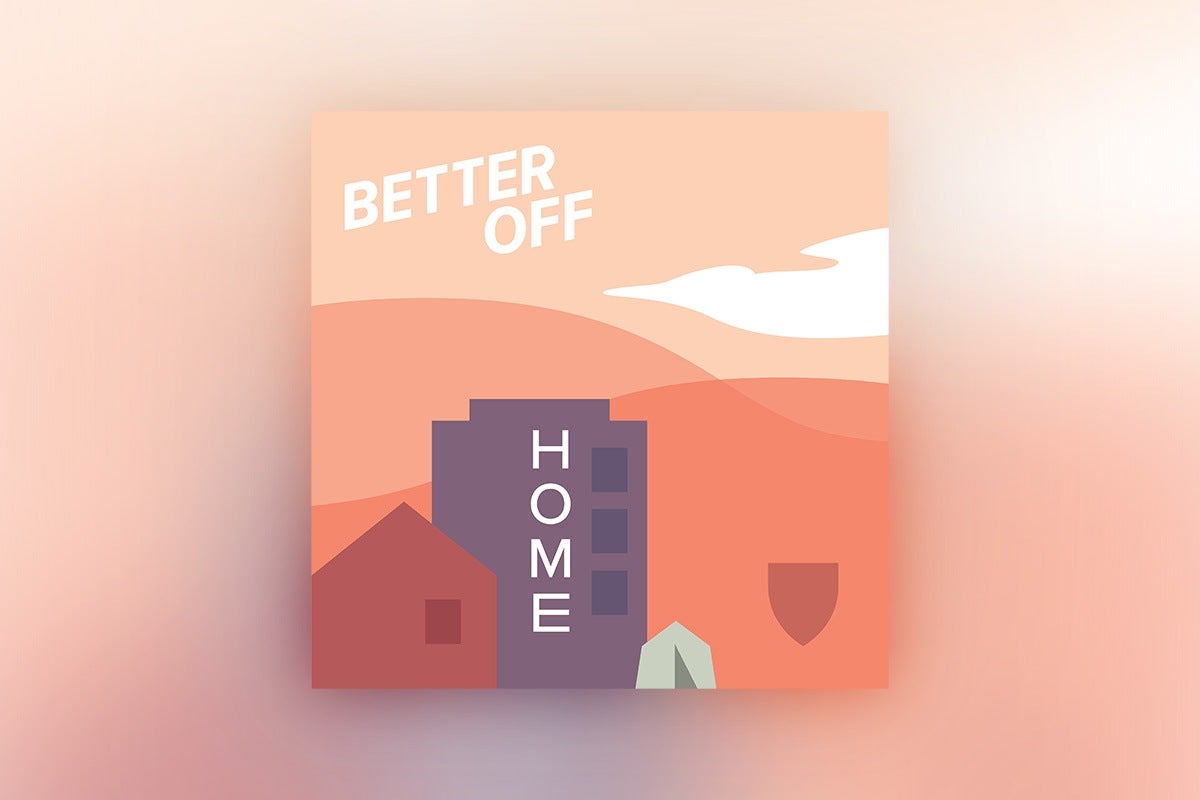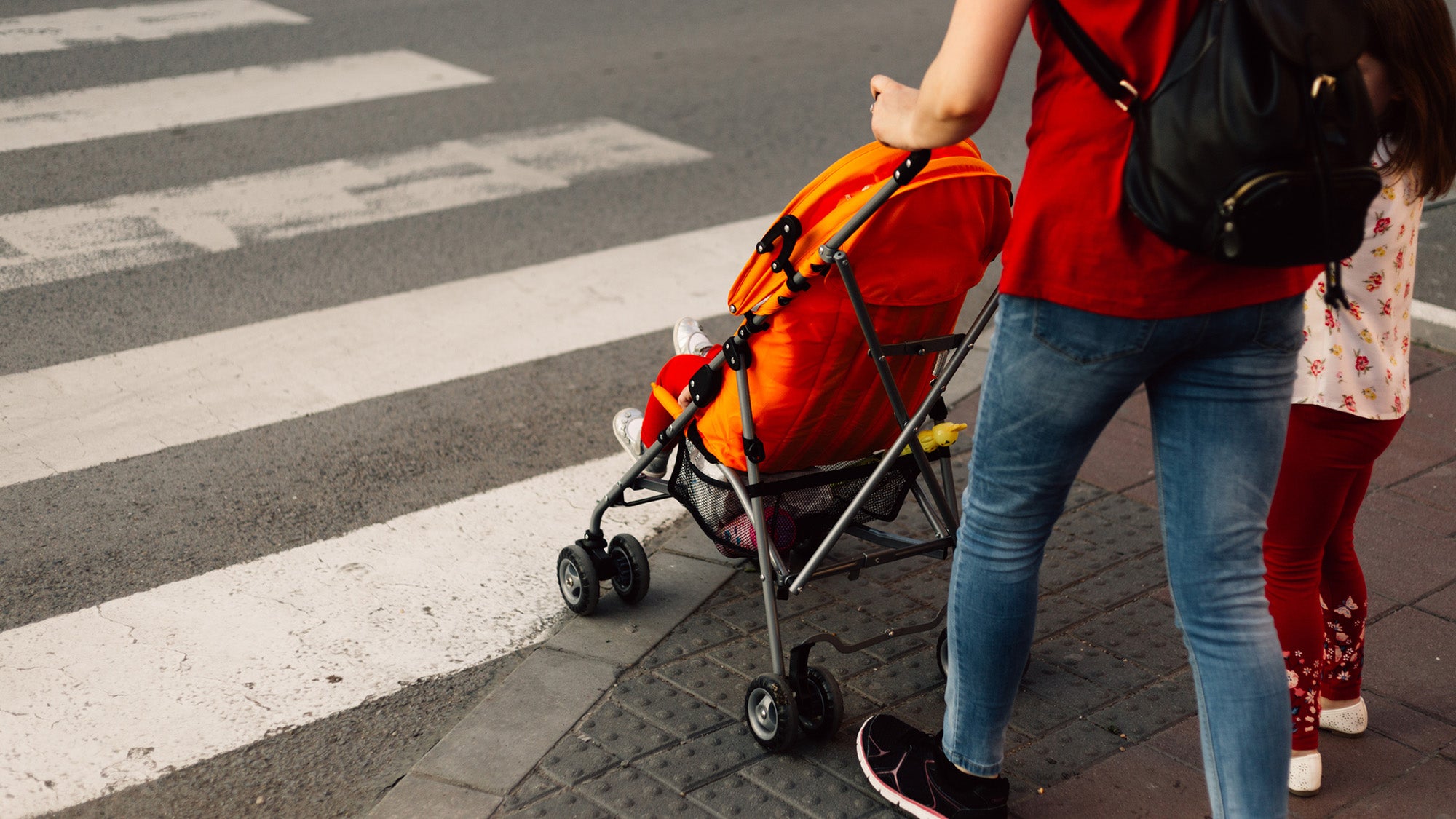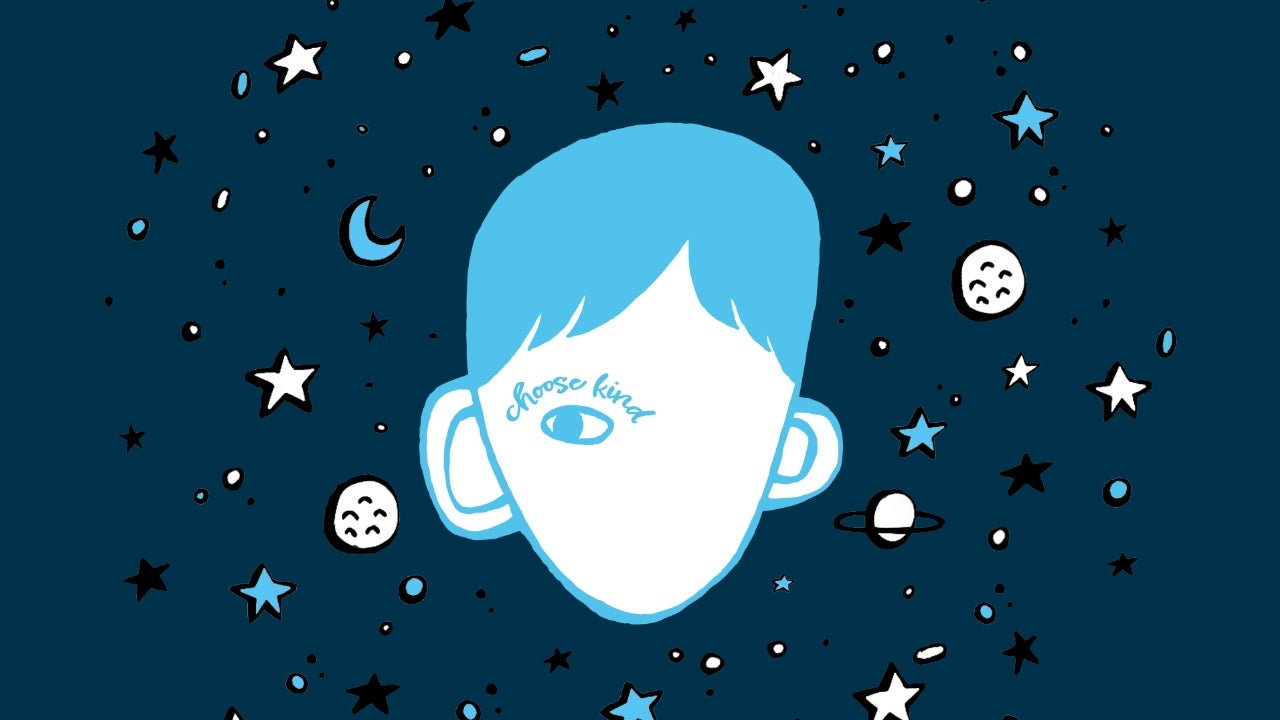Better Off Podcast: Is clean beauty for real?

It seems like every brand of makeup, fragrance, and hair care wants consumers to believe that their products are safe, natural, and clean. Is this all just greenwashing? The beauty industry is remarkably unregulated – and women, particularly Black women, bear the highest health risks from chemicals in everyday products. In this episode, we’ll ask: How can we decide what beauty and skincare products are safe to use?
SUBSCRIBE VIA APPLE PODCASTSSUBSCRIBE VIA GOOGLE PODCASTSSUBSCRIBE VIA SPOTIFY
Guests:
Shruthi Mahalingaiah, assistant professor of environmental reproductive and women’s health, Harvard T.H. Chan School of Public Health
- Read more about research from the Mahalingaiah Lab.
- Read research from graduate student Emily Silva on the kinds of chemicals found in menstrual blood.
Tamarra James-Todd, Mark and Catherine Winkler associate professor of environmental reproductive epidemiology, Harvard T.H. Chan School of Public Health
- Learn more about the Environmental Reproductive Justice Lab.
- Listen to the Beauty + Justice podcast.
- Learn more about environmental racism in personal care products.
Credits:
Host/producer: Anna Fisher-Pinkert
Better Off production team: Kristen Dweck, Elizabeth Gunner, Stephanie Simon, and Ben Wallace
Audio engineering and sound design: Kevin O’Connell
Research: Kate Becker
Full Transcript
Anna Fisher-Pinkert: From the Harvard, T.H. Chan School of Public Health, this is Better Off. A podcast about the biggest public health problems we face today. . .
Tamarra James-Todd: Just because it’s on the shelf doesn’t mean it’s safe.
Anna Fisher-Pinkert: And the people innovating to find public health solutions.
Shruthi Mahalingaiah: I was shocked to, to understand how interconnected our bodies are to what we’re exposed to in the air, our food, and what we put on our skin.
Anna Fisher-Pinkert: I’m your host Anna Fisher-Pinkert.
A few years ago, after reading one too many scary Reddit threads, I decided I was going to purge my bathroom cabinet of toxic beauty products. I started with nail polish. First, I bought five-free nail polish. That’s nail polish that’s made without the five so-called “worst: ingredients for your health. Things like formaldehyde and camphor. Then, as soon as I stocked up on that, I saw an Instagram ad for seven-free nail polish. And this week, while researching this episode, I discovered that there is 12-free nail polish.
All this has made me wonder, first of all, what is in nail polish? But more importantly, how do we define healthy beauty products? It seems like every soap and shampoo, every lipstick and hair gel, is marketed to make me think that it’s safe, clean, and natural. But what does science say about the products we’re using on our bodies?
I decided to ask an expert.
Shruthi Mahalingaiah: I’m Shruthi Mahalingaiah. I am an assistant professor of environmental, reproductive, and women’s health at the Harvard Chan School of Public Health. I am also a physician and I specialize in infertility and reproductive health disorders.
Anna Fisher-Pinkert: Shruthi studies the link between environmental exposures and reproductive health. She isn’t just interested in the chemicals we’re exposed to through polluted air or water, she’s interested in the chemicals we choose to expose ourselves to.
Shruthi Mahalingaiah: There are so many chemicals in personal care products: Perfumes, cosmetics, deodorants, even lotions or anti-aging creams. And let’s not forget hair products and nail products, which are increasingly popular, it seems, especially within the younger generations.
It’s hard to categorize every chemical, but some of the big categories are fragrances, preservatives, and stabilizers. There are also additional chemicals that may be involved in producing a specific color, a vibrant color.
Anna Fisher-Pinkert: You’ve probably heard of some of these chemicals before, including parabens, phthalates and surfactants. The problem with many of these chemicals is that they have endocrine-disrupting properties. In other words, they mess with our hormones.
Shruthi Mahalingaiah: So, cells in the body communicate in many different ways. And that kind of communication where a cell secretes a hormone and that hormone is received and interpreted by a cell that’s far away is part of endocrine signaling.
Anna Fisher-Pinkert: For example, the pituitary gland, which is at the base of the brain, secretes hormones that signal to the ovaries that it’s time to develop an egg and start the ovulation cycle. Other hormones regulate how our bodies grow, manage energy, and respond to stress.
Shruthi Mahalingaiah: We know that hormones are so important because there are hormone receptors on every single cell in the human body.
Anna Fisher-Pinkert: There are a few ways a chemical could disrupt endocrine signaling, but one is by mimicking a hormone in our bodies. And that’s actually what some common cosmetics do.
Shruthi Mahalingaiah: A lot of the antiaging creams actually work in similar mechanisms to estrogen, to plump up cells and lay collagen, which is something that we lose with age. Some of the creams and their utility and effectiveness in recreating that skin smoothness and turgor is due to their endocrine-disrupting effects.
Anna Fisher-Pinkert: While these endocrine-disrupting chemicals might be doing what we want by making our skin smoother, they’re also wreaking havoc with our body’s hormonal signals. After menopause, extra exposure to estrogen can lead to hormonally driven cancers like endometrial cancer or breast cancer. These endocrine disruptors also have the potential to negatively impact our reproductive health.
Shruthi Mahalingaiah: Some new data that one of the doctoral students in my lab, Emily Silva, has recently published shows that we can detect over 17,000 chemicals in the menstrual blood. And some of these chemicals were identified as common over-the-counter pharmaceuticals or personal care products and makeup.
Anna Fisher-Pinkert: That finding is worrisome because menstrual blood is coming from the uterus, the same place an embryo might grow in a future ovulation cycle. It indicates the embryos are potentially getting exposed to those same 17,000 chemicals as they grow. And we don’t know all the implications for that down the road.
Shruthi Mahalingaiah: I do think the data is overwhelmingly pointing in the direction that there is reproductive concern in toxicity both prenatally and in preconception.
I was shocked to understand how interconnected our bodies are at the ovary and the uterus to what we’re exposed to in the air, our food, and what we put on our skin.
Anna Fisher-Pinkert: The challenge is that endocrine-disrupting chemicals are so common in our personal care products. And in many cases, they’re there because they have properties we like. Phthalates are really good at holding fragrance. And parabens are really good at keeping bacteria out of products. We like our products to smell good and have a long shelf life. So creating a clean bathroom cabinet, a healthy bathroom cabinet– that’s not so simple.
Tamarra James-Todd: Just because it’s on the shelf doesn’t mean it’s safe. And I think that that’s one of the kind of surprising things for some people to learn.
Anna Fisher-Pinkert: That’s Tamarra James-Todd. She’s an environmental reproductive epidemiologist and an associate professor at Harvard T.H. Chan School of Public Health.
Tamarra James-Todd: What I have found when I discuss these ingredients in products is that people believe that the way that we regulate ingredients in personal care products is that if it’s made it to the market, if it’s made it to the shelf in my local supermarket or pharmacy, then it’s been vetted. It’s safe. It’s okay for me to use. But that is actually not the way that regulations are done in our country. Really the onus falls on the company to kind of vet it beforehand. That of course can be a conflict of interest for many companies who are seeking to make a profit on the selling of products.
Anna Fisher-Pinkert: Take fragrance. A lot of products use manmade chemicals called phthalates to hold onto fragrance and keep it from evaporating.
Tamarra James-Todd: Fragrance. When you see that on the back of a container, that’s oftentimes hundreds of different chemicals. And companies aren’t required by the Food and Drug Administration or any other governmental body to actually disclose that information.
Anna Fisher-Pinkert: Research shows the people who regularly use hair oils are more likely to have higher concentrations of phthalates in their bodies. And those phthalates in particular are linked to glucose dysregulation and an increased risk of diabetes.
I’ve tried to avoid products with those wordy, scary chemicals and products with mystery ingredients like “fragrance.” But Tamarra says that even those replacement ingredients can have detrimental effects.
Tamarra James-Todd: You know, some people say, no, no, no, I avoid fragrance. I don’t do that. I just use essential oils. And I’m like, okay, well, I hate to break the news to you. Some essential oils are also able to really impact and alter our body’s hormonal processes.
Anna Fisher-Pinkert: In fact, lavender essential oil has been linked to breast development in boys. At this point, you might be thinking: If regular products are bad and so are there replacements, why not get rid of all of it? Makeup and hair. They’re not essentials. But that doesn’t take into account the culture we live in.
Tamarra James-Todd: We know based on how we kind of socially stratify in our society that there are groups and populations that are more exposed.
Anna Fisher-Pinkert: In this case, that means women and people of color.
Tamarra James-Todd: Being a Black woman means that hair is a really important part of my journey. My everyday daily process.
Anna Fisher-Pinkert: Tamarra started to connect culture, beauty and health when she was a graduate student at Boston University. She knew from her work in a breast cancer lab that starting menstruation early was a risk factor for breast cancer. And one day, in an environmental health class, she heard a lecture describing a link between the endocrine-disrupting chemicals in hair products marketed to Black women and breast cancer.
Tamarra James-Todd: That really was an aha moment for me because many of my friends that I grew up with in my neighborhood, we started menstruating much earlier than many of the people that we happened to go to school with. I grew up in a, in a place and space, in a neighborhood that was a predominantly Black neighborhood, but we went to a predominantly white school. And so, we got to kind of see some of these differences in real time.
Anna Fisher-Pinkert: Tamarra realized that culture is a crucial factor in how and why we use beauty products. And in turn, how we get exposed to whatever chemicals those products contain.
Tamarra James-Todd: While we think sometimes beauty is a superficial ideal, the reality is that it confers economic power, some sort of social status and benefit. And when we have Eurocentric standards of beauty – long, straight hair, lighter skin, those things actually translate into people having the need or desire to change or to conform to certain beauty standards. So for example, skin lightening creams, contain mercury, but for many people the lighter the skin, there’s some economic benefit to that. And so the reason, for higher exposures in many subpopulations, particularly women of color, is because we have these social factors that are driving what people feel forced to use to get that job, or to feel accepted by their peers.
Anna Fisher-Pinkert: In 2021 Dove conducted the CROWN research study surveying 2,000 American women. 53% of Black mothers said that their child had experienced hair discrimination before the age of five. The pressure to have straighter hair, even more socially acceptable curly hair, leads to a lot of product use over a lot of years.
Tamarra James-Todd: I think people get caught up on hair relaxers. It’s not just the relaxer. It’s, it’s all of the other products that people use on a daily or weekly basis to maintain that style. And now with the natural hair movement, many people are using many, many, many more products to maintain a certain curl pattern that feels or sits better with the way that they perceive their natural hair should look as opposed to the way that it actually grows out of their head.
Anna Fisher-Pinkert: In order to create hairstyles that conform to our cultural beauty standards, we all at one point or another, turn to chemistry. But a study Tamarra led in 2012 showed that 50% of hair products used by Black women contain endocrine disruptors compared with just 7% of those used by white women. Even if you avoid that marketing, safer products might just not be available to you where you live.
Tamarra James-Todd: An amazing doctoral student, Marissa Chan, here at the Harvard Chan School of Public Health is doing a place-based study, really trying to understand what are the structural racism factors that are associated with what is available to you at your local store with respect to personal care products.
And it turns out that, perhaps shockingly or un-shockingly, communities of color and lower-income communities have many, many more products on their shelves that contain more harmful ingredients. So that becomes an issue of environmental racism in that case.
Anna Fisher-Pinkert: One type of policy that attempts to get at these issues of racism are CROWN acts, which prohibit discrimination against people who wear their hair in natural or protective styles like locks, braids, or twists, taking away some of that economic pressure to adhere to Eurocentric beauty standards. Here in Massachusetts, our state’s CROWN act went into effect in October. But on an individual level, Tamarra says we should do what we can when we can to research and remove the harmful products in our own cabinets.
Tamarra James-Todd: I wouldn’t say okay, today, open up your cabinets and dump it all out. Don’t do that. Like, who has the time, money, energy to do that? But as you run out of products, maybe think about kind of swapping them out and changing them over.
Anna Fisher-Pinkert: Shruthi Mahalingaiah says that if you have a product you don’t want to get rid of, limit how you use it.
Shruthi Mahalingaiah: If it’s for beauty or personal care, really be mindful and use that for a specific amount of time or a specific event. Always take off the makeup at the end of the day.
Anna Fisher-Pinkert: Despite knowing all that they know about the toxic chemicals in beauty products, Shruthi and Tamarra recognize that those cultural and personal experiences forever link us to certain products. Tamarra remembers playing with her grandmother’s perfume drawer as a child.
Tamarra James-Todd: I’d open it up and there would be probably on the order of at least a hundred different bottles of perfume. I don’t really know that she wore, you know, any of them other than this one. That was my experience of like what beauty is and what it was to kind of feel pretty and to smell good. And so companies know that that’s what they’re marketing and selling to people.
Shruthi Mahalingaiah: My grandmother also loved her makeup and fragrance routine and reinforced that, you know, to really be a legit lady, I would need to undertake a good routine myself and encouraged the hair products, the face products. Skin lighteners were very popular, and then one of my favorite aunties definitely always wore bright red lipstick with fragrance that I, you know, will never forget.
Anna Fisher-Pinkert: For me, my hair products are the last frontier. Being able to shape my very frizzy Jewish hair into smooth curls is something I’m not ready to give up. Shruthi has struggled with her own bathroom cabinet too.
Shruthi Mahalingaiah: When I got rid of a lot of products I’d had for decades, I kind of needed a almost mental vaccination for all of the different marketing for the things that I might need on any given day. I think it’s a balance. What’s the minimum I can live with and still feel safe that my house is clean and that we have enough products to get us through our self-care routines?
Anna Fisher-Pinkert: But when we place all the responsibility on individual choice, we leave the door wide open for health inequity.
Tamarra James-Todd: Right now, we continue to kind of place the onus on the individual. And okay, I guess it’s my responsibility to try to play chemist and go and look at the back of the bottle! That’s a lot to put on an individual consumer. If we were to regulate better, that benefits all. That becomes an improvement in really being able to achieve health equity through reduction across the board.
Anna Fisher-Pinkert: Tamarra points out that we’ve done this before. We decided the health cost of lead paint outweighed the benefits and banned it back in 1978. As a result, exposures went down.
Shruthi Mahalingaiah: With the industrial revolution and innovations in chemistry and chemical design, we have introduced a large number of chemicals that can help our everyday lives and bring such great convenience. But sometimes there are costs that are hard to see and hidden.
Anna Fisher-Pinkert: The question then is what consequences can we live with. And what conveniences can we live without?
Thanks for listening to Better Off.
We are better off with our team: Kristen Dweck, Elizabeth Gunner, Stephanie Simon, and Ben Wallace.
Audio engineering and sound designed by Kevin O’Connell.
Additional research from Kate Becker.
Special, thanks to our guests, Shruthi Mahalingaiah and Tamarra James-Todd. We’ll have links to learn more about their work on our website: hsph.me/better-off.
Tamarra James-Todd also hosts a podcast that you might enjoy. It’s called Beauty + Justice. She has frank, eye-opening, and inspiring conversations with leaders in healthcare, academia, nonprofits, and clean beauty businesses about what it will take to create a more clean and equitable future of beauty for everyone. Look for Beauty + Justice in your favorite podcast app.
If you like this episode, please subscribe in your favorite podcast app. Don’t forget to rate and review us and tell your friends about the podcast, too. You can find us on Twitter and Instagram @harvardchansph. To find the next episode of this podcast, visit hsph.me/better-off. That’s it for this week. Thanks for listening.


